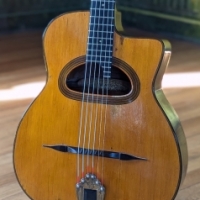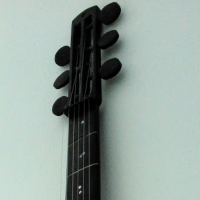DjangoBooks.com
Welcome to our Community!
Categories
- 20K All Categories
- 1.1K General
- 476 Welcome
- 59 Archtop Eddy's Corner
- 146 CD, DVD, and Concert Reviews
- 384 FAQ
- 26 Gypsy Jazz Italia
- 26 Photos
- 202 Gypsy Picking
- 21 Unaccompanied Django
- 15 Pearl Django Play-Along Vol.1
- 17 Gypsy Fire
- 45 Gypsy Rhythm
- 1.4K Gypsy Jazz University - Get Educated
- 130 Gypsy Jazz 101
- 224 Repertoire
- 218 History
- 707 Technique
- 51 Licks and Patterns
- 6 Daniel Givone Manouche Guitare Method Users Group
- 20 Eddie Lang Club
- 1.3K Gypsy Jazz Gear
- 801 Guitars, Strings, Picks, Amps, Pickups and Other Accessories
- 457 Classifieds
- 49 Recording
- 62 Other Instruments
- 18 Violin
- 5 Mandolin
- 22 Accordion
- 7 Bass
- 10 Woodwinds
- 347 Gypsy Jazz Events
- 143 North America
- 109 Europe
- 95 International














Comments
Yo, like I said in the video, it’s not about transcribing without any instrument but it’s about testing your ability to hear and recognize concepts. In other words, it’s more about engaging your brain than anything else.
The language analogy is the best one I can come up with. For anyone who speaks English fluently, if you were to say one thousand ninehundred and fifty seven to any fluent English speaker, they would be able to repeat it immediately. They’re not even focusing on the sound but the meaning. You can even mispronounce it “one fousand ninehungred and fiffy seben” and people would still get it.
But if you were to say the exact same thing to someone who doesn’t speak English, you’d have to make sure to say it very slowly and get the pronounciation right. With enough attempts, they’ll be able to reproduce the same sounds, but they won’t understand what those sounds mean.
So that’s the exact same thing with music , sometimes artists play a sloppy note or even an accidental wrong note but people with good ears still understand what thery were going for. It happens in the very first recording of Nuages in the key of F. Over the Dm chord, Django messes up a note. I had a student transcribing it, and he transcribed the mistake but didn’t really understand what Django was trying to do, I had to explain to him that he didn’t mean to play the wrong note, and I showed him what Django was actually going for.
So when you lift solos, you should do it intelligently by constantly engaging your brain and trying to relate the solo to the harmony for starters. There are other things as well: dynamics, tone, phrasing, ornaments, duration of note, etc... All of these things make up the big picture. I always tell students to listen to these subtle details. There are certain recordings where Django is picking softly closer by the sound hole, there are other recordings (or even the same one), where Django will attack the strings with more bite, and a bit closer to the bridge. These are the musical things that are so important than just figureing out what notes he’s playing in a binary on/off fashion
www.denischang.com
www.dc-musicschool.com
And it was particularly gratifying to learn that Django once recorded a clam!
Edgar Degas: "Only when he no longer knows what he is doing does the painter do good things.... To draw, you must close your eyes and sing."
Georges Braque: "In art there is only one thing that counts: the bit that can’t be explained."
this is the progression in I can't give you anything but love. He's superimposing these changes over an A chord to get to A7.
That's another thing, when I used to lift django solos (or other musicians), I didn't always understand right away, but by continuously doing it and seeing other situations where they were doing the same concept but in a clearer manner, I started to understand.
Check out the Rome session recording of Djangology for instance, at one point, over the Bbdim7, Django played 3 notes that seem to indicate a Db triad. I remember the day I lifted this solo, it was January 2, 2006, I was in London at the hospital waiting for my niece to be born that evening. When I transcribed the solo, I had no idea how Db related to Bbdim7... But then years later, as I transcribed more Django solos, I realized that over turnarounds (C A7 Dm G7 or C/E Ebdim7 Dm7 G7, etc), Django liked to play Em7 Ebm7 Dm7 G7. This happens naturally in Nuits de St-German Des Pres. So then I reazlied that the Db triad was actually a Bbm7, and Django was thinking Bm7 Bbm7 Am7! He played only the upper extensions of Bbm which made it seem like it was a Db triad. Suddenly, it made sense to me
www.denischang.com
www.dc-musicschool.com
I remember you explaining this heuristic approach on an early DVD and something really clicked for me. So many people get bogged down in incredibly arcane scalar explanations of lines based on the actual chord of the moment. I find those kind of explanations completely useless and at odds with what I hear in the music that moves me which is basically chords one four and five connected in interchangeable ways.
Thanks for taking the time to write out this Eureka moment in all it's seeming nerdiness, it looks like gobbldigook on the page really but if anyone actually takes the time to think it through it is so simple and(here's the rub), once realised, obvious.
And useable.
D.